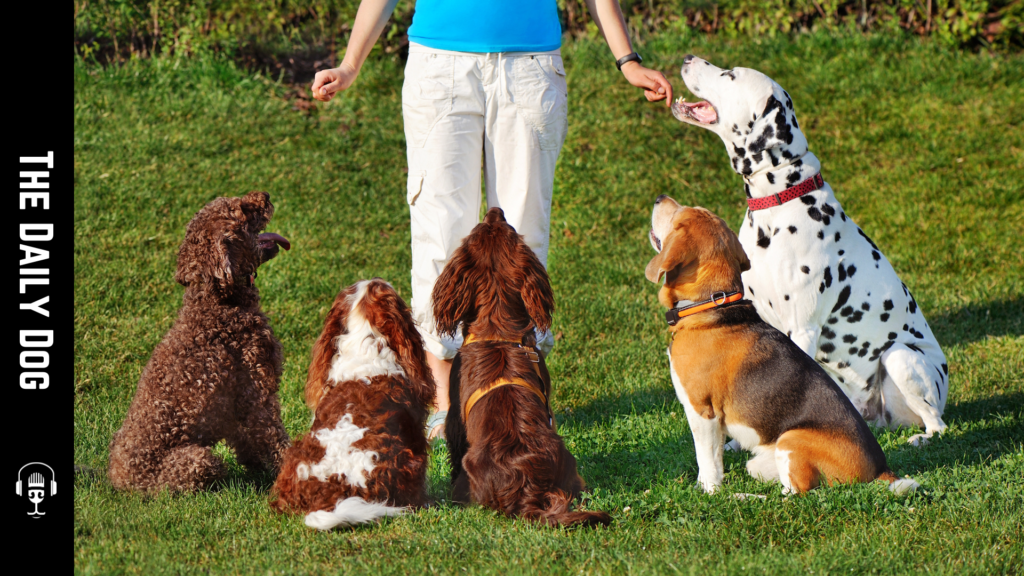Training a new dog can be an enriching experience, but it’s not challenging. New dog owners often make mistakes that can hinder the training process and lead to frustration for both the pet and the owner. Understanding and avoiding these common pitfalls can ensure a smoother, more effective training journey. This post will explore these mistakes and offer practical solutions to help you and your furry friend succeed.
1. Inconsistent Commands
Mistake:
One of the most common mistakes is using inconsistent commands. New dog owners might interchange words like “come” and “here,” leading to confusion for the dog.
Solution:
Choose clear and simple commands for each action and stick to them. Consistency helps your dog understand and remember what is expected. Ensure everyone in the household uses the same commands to avoid mixed signals.
2. Lack of Patience
Mistake:
Training a dog requires time and patience, but new owners often expect quick results. This impatience can lead to frustration and ineffective training sessions.
Solution:
Set realistic expectations and understand that training is a gradual process. Celebrate small victories and remain patient. Remember, persistence pays off.
3. Inadequate Socialization
Mistake:
Many new owners underestimate the importance of socialization. A lack of exposure to different people, environments, and other animals can result in fearfulness or aggression.
Solution:
Introduce your dog to various environments, people, and other dogs from a young age. Positive socialization experiences help your dog become well-adjusted and confident.
4. Over-reliance on Treats
Mistake:
While treats are an effective training tool, relying too heavily on them can lead to dependency. Dogs may only obey when a treat is visible.
Solution:
Use treats as an initial motivator, but gradually transition to other forms of praise, such as verbal affirmations or petting. This balance encourages obedience even without treats.
5. Inconsistent Training Schedule
Mistake:
Irregular training sessions can confuse your dog and slow their progress. Dogs thrive on routine, and inconsistent training can disrupt their learning.
Solution:
Establish a regular training schedule and stick to it. Short, frequent sessions are more effective than sporadic, lengthy ones. Consistency helps reinforce learning.
6. Ignoring Body Language
Mistake:
New owners often overlook their dog’s body language, missing cues that indicate discomfort, stress, or excitement.
Solution:
Learn to read your dog’s body language. Understanding signs like tail wagging, ear position, and posture can help you adjust your training approach to suit your dog’s emotional state.
7. Skipping Basic Training
Mistake:
Eager to teach impressive tricks, some owners skip basic obedience training. This oversight can lead to behavioral issues.
Solution:
Focus first on teaching basic commands such as sit, stay, and come. A foundation of basic obedience is essential for more advanced training and ensures your dog’s safety.
8. Negative Reinforcement
Mistake:
Using punishment or negative reinforcement can harm the bond between you and your dog, leading to fear or aggression.
Solution:
Opt for positive reinforcement techniques. Reward desired behaviors with praise, treats, or play. This approach builds trust and encourages your dog to repeat good behavior.
9. Overwhelming the Dog
Mistake:
New owners sometimes overwhelm their dogs with too many commands or long training sessions, which can lead to confusion and fatigue.
Solution:
Keep training sessions short and focused. Teach one command at a time and ensure your dog masters it before moving on to the next. This approach prevents overwhelm and promotes effective learning.
10. Neglecting to Proof Commands
Mistake:
Training in a single environment can lead to a dog obeying only under specific conditions.
Solution:
Practice commands in various settings with different distractions. Proofing helps your dog learn to obey regardless of the environment, ensuring reliability.
Conclusion
Training a new dog requires patience, consistency, and understanding. You can create a positive and effective training experience by avoiding these common mistakes. Remember, building a strong bond with your dog through training improves behavior and enriches your relationship. Enjoy the journey with your furry companion, and celebrate each step towards success.










